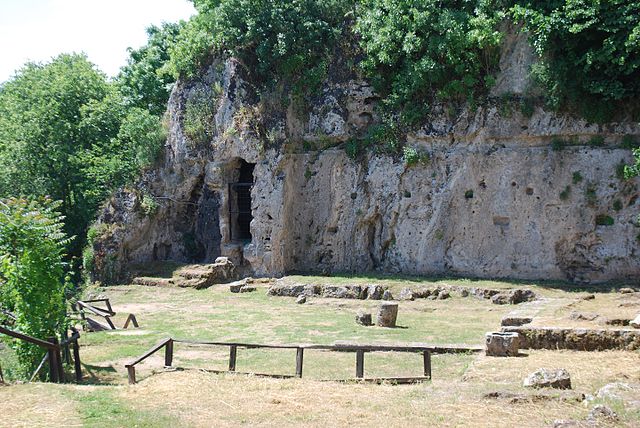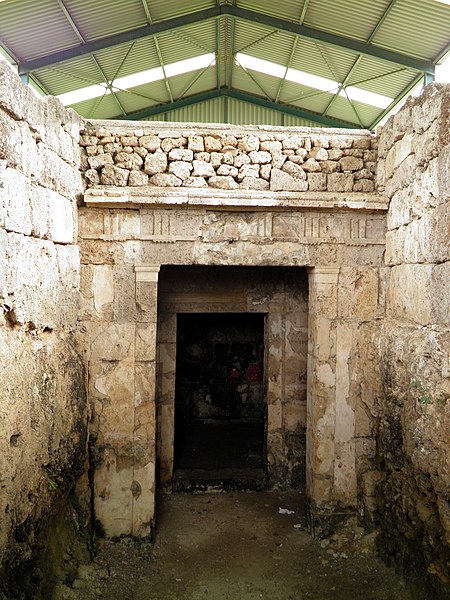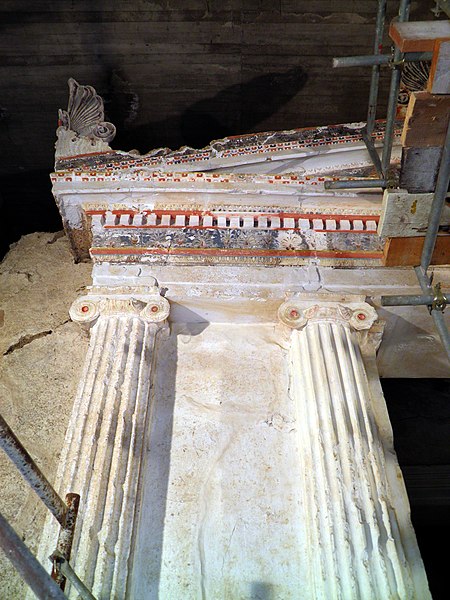Mieza, "shrine of the Nymphs", was a town in ancient Macedonia, where Aristotle taught the boy Alexander the Great between 343 and 340 BCE. Ptolemy classifies Mieza among the cities of Emathia. Stephanus of Byzantium, on the other hand, deriving his information apparently from Theagenes, alludes to it as "τόπος Στρυμόνος", and adds that it was sometimes called Strymonium. The site where Mieza once stood is the modern Lefkadia, near the modern town Náousa, Imathia, Central Macedonia, Greece, and has been the subject of archeological excavations since 1954.
Cave site at Mieza believed to be part of Aristotle's Macedonian school
Modern statue of Aristotle near the School
Kinch's Tomb
Facade of the "Tomb of the Palmettes" (3rd BC)
Alexander III of Macedon, most commonly known as Alexander the Great, was a king of the ancient Greek kingdom of Macedon. He succeeded his father Philip II to the throne in 336 BC at the age of 20 and spent most of his ruling years conducting a lengthy military campaign throughout Western Asia, Central Asia, parts of South Asia, and Egypt. By the age of 30, he had created one of the largest empires in history, stretching from Greece to northwestern India. He was undefeated in battle and is widely considered to be one of history's greatest and most successful military commanders.
Alexander in the Alexander Mosaic
Archaeological site of Pella, Greece, Alexander's birthplace
Roman medallion depicting Olympias, Alexander's mother
Philip II of Macedon, Alexander's father








